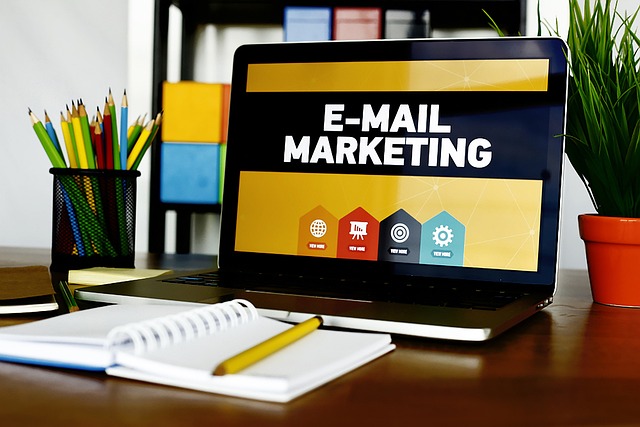In the ever-evolving world of email marketing, success is not measured solely by the number of emails sent or the size of your subscriber list. To truly gauge the effectiveness of your campaigns, you must dig deeper and analyze key metrics that provide valuable insights.
Imagine having a compass that guides you through the vast sea of email marketing, helping you navigate towards success. Well, look no further. In this article, we will unveil the seven key email marketing metrics that will serve as your compass, guiding you towards campaign success.
By measuring metrics such as Open Rate, Click-Through Rate (CTR), Conversion Rate, Bounce Rate, Unsubscribe Rate, and Return on Investment (ROI), you will gain a data-driven understanding of how well your campaigns are performing.
Armed with this knowledge, you can make informed decisions to optimize your email marketing strategies and achieve remarkable results.
So, let’s dive in and unlock the secrets to email marketing success!
Key Takeaways
- Open Rate and Click-Through Rate (CTR) are important metrics to measure email engagement and effectiveness of A/B testing.
- Conversion Rate indicates the success of a campaign in persuading recipients to take a desired action.
- Bounce Rate and Unsubscribe Rate are crucial metrics to track email deliverability issues and audience disinterest.
- ROI is a vital metric to measure the financial impact of email campaigns and optimize resources for better results.
Open Rate
Want to know how many people are actually opening your emails? The open rate is a key metric that measures the success of your email marketing campaign. It provides valuable insights into your email engagement and helps you gauge the effectiveness of your A/B testing.
By tracking the open rate, you can determine if your subject lines are enticing enough to capture your audience’s attention and if your email content is relevant and compelling. A high open rate indicates that your subscribers are interested in what you have to say and are actively engaging with your emails. On the other hand, a low open rate may indicate that your emails are being ignored or going straight to the spam folder.
Understanding your open rate is crucial for optimizing your email marketing strategy and improving your overall campaign performance.
Now, let’s dive into the next important metric: the click-through rate (CTR).
Click-Through Rate (CTR)
To truly appreciate the impact of your email campaign, take a moment to consider the remarkable journey your audience embarks on when they click through. This journey is a crucial step in measuring the success of your campaign.
Here are some key points to consider:
-
Engagement rate: The click-through rate (CTR) measures the level of engagement your audience has with your email content. It indicates how effective your campaign is at capturing their attention and motivating them to take action.
-
Email deliverability: A high CTR indicates that your emails are reaching the intended recipients and are not getting lost in spam folders. It is a good indicator of your email deliverability.
-
Conversion rate: The CTR is a precursor to the conversion rate, which measures the percentage of recipients who not only click through but also complete a desired action, such as making a purchase or signing up for a newsletter.
By understanding the importance of the click-through rate and its relationship to engagement and email deliverability, you can optimize your campaign for better conversion rates.
Conversion Rate
Imagine the thrill of seeing your audience take that final step and complete a desired action, like making a purchase or signing up for a newsletter – the conversion rate is where the true magic happens. It’s one of the key email marketing metrics that measures the percentage of recipients who not only clicked on your email but also took the desired action.
A high conversion rate indicates a successful campaign that’s effectively engaging and persuading your audience. To improve your conversion rate, consider optimizing your email design, creating compelling and personalized content, and implementing clear call-to-action buttons.
Additionally, conducting A/B testing and analyzing the data can provide valuable insights for further optimization. By tracking and monitoring your conversion rate, you can measure the success of your email marketing campaigns and continuously improve your strategies.
Now, let’s dive into the next email marketing metric: bounce rate.
Bounce Rate
The bounce rate is like a door that slams shut before your audience has a chance to step inside your email world, leaving you wondering how many missed opportunities lie beyond. It measures the percentage of emails that were not delivered to recipients’ inboxes. A high bounce rate indicates issues with email deliverability, potentially caused by invalid or inactive email addresses. To improve deliverability, ensure your email list is clean and up-to-date. Segmenting your email list based on user preferences and behavior can also help reduce bounce rates by sending targeted, relevant content. By monitoring and optimizing your bounce rate, you can maximize the effectiveness of your email campaigns and ensure your messages are reaching the intended audience. As we move on to the next section about the ‘unsubscribe rate’, it’s important to understand the impact of bounce rates on overall campaign success.
Unsubscribe Rate
Picture yourself as a ship sailing through the vast ocean of email communication, and the unsubscribe rate is like a strong current that pulls your audience away from your message, leaving you with fewer opportunities to engage and connect with them.
To ensure customer engagement and email deliverability, it’s crucial to monitor and optimize your unsubscribe rate. Here are four key reasons why you should pay attention to this metric:
-
Audience disinterest: A high unsubscribe rate indicates that your audience is disinterested in your content or finds it irrelevant. It’s a clear sign that you need to reassess your email strategy and provide more valuable and targeted content.
-
List health: A growing unsubscribe rate can negatively impact your email deliverability. Maintaining a clean and engaged subscriber list ensures that your emails reach the intended recipients’ inbox.
-
Feedback opportunity: Tracking unsubscribe reasons allows you to gather valuable feedback from your audience. Understanding why they are leaving can help you improve your email campaigns and better cater to their needs.
-
Cost-effectiveness: High unsubscribe rates waste your marketing budget and decrease the return on investment. By reducing your unsubscribe rate, you can maximize the effectiveness of your email campaigns and improve your ROI.
Now, let’s explore how measuring email campaign success can be tied to the return on investment (ROI).
Return on Investment (ROI)
Monitoring and optimizing your unsubscribe rate is crucial for ensuring customer engagement and email deliverability, and tying email campaign success to return on investment (ROI) allows you to maximize the effectiveness of your marketing efforts. Measuring email marketing success through ROI provides valuable insights into the financial impact of your campaigns. By tracking the revenue generated from email marketing and comparing it to the cost of running those campaigns, you can determine the overall effectiveness and profitability of your email marketing strategy. This data-driven approach enables you to make informed decisions about allocating resources and optimizing your campaigns for better results. To illustrate the importance of ROI in email marketing, consider the following table:
| Campaign | Revenue Generated | Cost of Campaign | ROI |
|---|---|---|---|
| Campaign 1 | $10,000 | $2,000 | 400% |
| Campaign 2 | $15,000 | $3,000 | 400% |
| Campaign 3 | $8,000 | $2,500 | 220% |
| Campaign 4 | $12,000 | $2,500 | 380% |
| Campaign 5 | $9,000 | $2,000 | 350% |
By consistently measuring your email marketing effectiveness through ROI, you can identify the most successful campaigns and allocate resources accordingly, ultimately driving higher returns and maximizing the impact of your email marketing efforts.
Frequently Asked Questions
How can I improve the open rate of my email campaigns?
To improve the open rate of your email campaigns, focus on creating compelling subject lines that grab readers’ attention. Use intriguing language, urgency, or personalization techniques to entice them to open your emails.
Additionally, personalize the email content to make it more relevant and engaging for your audience. By tailoring your messages to their interests and needs, you can increase the likelihood of them opening and engaging with your emails, ultimately driving campaign success.
Are there any best practices for increasing the click-through rate in email marketing?
To increase the click-through rate in email marketing, focus on email personalization and segmentation. By tailoring your emails to specific audience segments and personalizing the content, you can grab the reader’s attention and make them more likely to click.
Use data-driven insights to understand your audience and create targeted campaigns. Incorporate dynamic content, personalized subject lines, and clear call-to-action buttons to encourage engagement.
These practices have been proven to boost click-through rates and drive better campaign results.
What factors can influence the bounce rate of email campaigns?
Factors affecting the bounce rate of email campaigns can vary, but there are several key factors to consider.
First, ensure that your email list is clean and up-to-date to minimize invalid or inactive addresses.
Second, focus on optimizing email deliverability by following best practices like using a reputable email service provider and personalizing your emails.
Lastly, regularly monitor and analyze your email campaign metrics to identify any patterns or issues that may be contributing to a high bounce rate and make necessary adjustments.
How can I effectively calculate the return on investment (ROI) for my email marketing campaigns?
Calculating ROI for email marketing campaigns is essential for measuring the success of your efforts. It’s vital to overcome the objection that ROI calculations can be time-consuming. By tracking the revenue generated from email campaigns and comparing it to the cost of running those campaigns, you can easily determine your ROI.
This data-driven approach provides valuable insights into the effectiveness of your email marketing strategy and helps you make data-backed decisions for future campaigns.
What are some strategies to reduce the unsubscribe rate in email marketing?
To reduce the unsubscribe rate in email marketing, focus on improving email deliverability and creating engaging email content.
Start by ensuring that your emails are reaching the inbox by optimizing your sender reputation and avoiding spam filters.
Then, craft compelling subject lines and personalized content to grab subscribers’ attention. Use clear and concise language, include relevant visuals, and provide value to your audience.
Regularly analyze open rates, click-through rates, and conversion rates to track the success of your strategies.
Conclusion
You now have the tools to measure the success of your email marketing campaigns. By tracking key metrics like open rate, click-through rate, conversion rate, bounce rate, unsubscribe rate, and return on investment, you can gain valuable insights into the effectiveness of your campaigns.
But here’s an interesting statistic to keep in mind: according to recent studies, personalized emails have a 29% higher open rate and a 41% higher click-through rate than generic ones. So, make sure to personalize your emails to maximize engagement and drive better results.
Start measuring these metrics and watch your email campaigns thrive!








